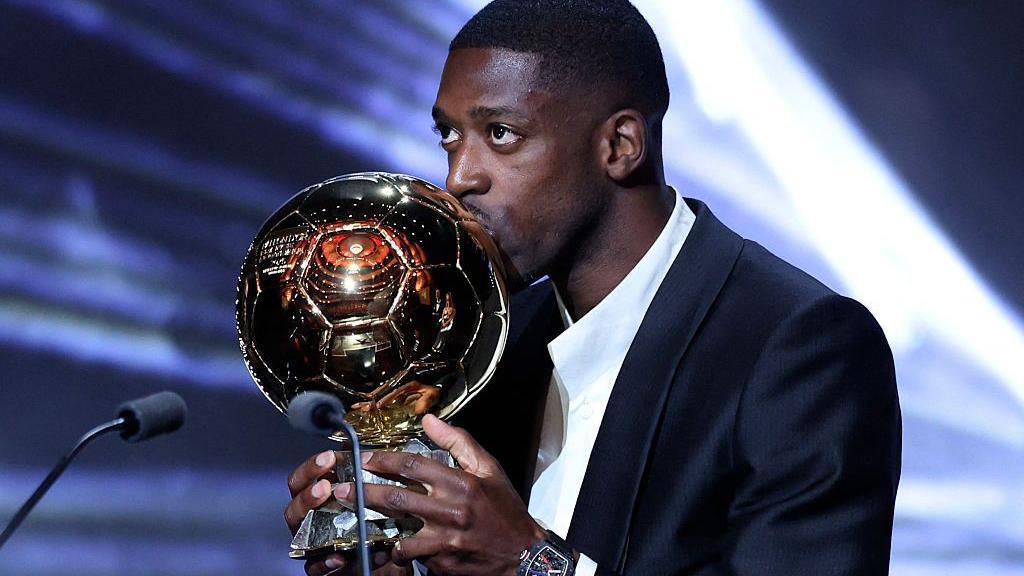The U.S. Soccer Federation released its analysis of men's and women's Division I college soccer last week. Their main argument is clear from the report's title: "Ensuring College Soccer Thrives in the Modern Era of College Athletics and the Changing U.S. Soccer Landscape."

Professional Soccer Players Should Hire Transfer Analysts
We've all seen it, sometimes with our favorite club or player, far too often, a player makes a dream transfer, and it turns out to be an absolute nightmare. The player gets turned into a meme on social media, maybe gets booed at the stadium, and it all results in a situation where both the player and club are left dissatisfied.

But it doesn't have to be that way.
In my opinion, there are three reasons transfers fails:
1. Injuries
2. Club dysfunction
3. Poor stylistic fit
The first two are out of the athlete's hands, so I want to focus on number 3. That is the base of this article, my belief that professional soccer players should hire consultant firms that analyze their strengths and weaknesses, matching them with the best club possible.
Unfortunately, it is commonplace to see a player sign for a club simply because of prestige, ignoring that it might not be a fit for what they do well.
The truth is only a few players in this world can excel regardless of system; the secret is most of your favorite players require specific playing styles to get the best out of them.
For example, Mo Salah was a great player at Roma, good enough to score a respectable 29 goals in 65 games over two seasons. He joins Liverpool, and in his first season, he scores 32 goals in 36 games, surpassing his total over two years in Roma.

How did that happen? Fit. Mo Salah's greatest quality is his speed and dribbling/combination ability in tight spaces. Klopp's Liverpool are renowned for the style the coach coined himself, "Heavy-metal football." The instruments are the high pressing, quick transitions, and explosive runs the forwards make . . . The kind of style suiting a forward like Mo Salah with his world-class speed and agility leveraged to generate plenty of high-quality scoring opportunities. In his first season, Mo Salah set the world aflame as he broke the long standing Premier League goal-scoring record. Evidence of a player who landed in the right system for his strengths.
On the other end, let's look at Romelu Lukaku. Lukaku's strengths are his pace and ball-carrying ability in open space. That lends itself to a playing style where a team sits in deep, letting their opposition have possession, waiting for an opportunity to feed their players in the space left behind. That is precisely the style Antonio Conte's Inter Milan employed to end Juventus' nine-year Serie A dominance. Last season, Inter finished seventh in possession, but Lukaku led the league in goal contributions with 24 goals and 11 assists.

Lukaku's highest-scoring league season was with Everton in 2016-17, where he scored 25 goals. Everton finished 8th in possession that year, and their overall possession percentage of 52.1 was only .3 off the 52.4 Conte's Inter boasted.
But is this a one-off? Not at all. Lukaku played four seasons at Everton and scored at least 15 goals in three of those seasons. He had one off year in 2014-15, where he only scored ten goals, a year where Everton's possession rate of 54.7 was a significant deviation from the 52.1, 51.9, and 51.9 they posted in the other three seasons. That 54.7 is also awfully close to the 54.8 and 54.5 possession rates Manchester United recorded in the two disappointing seasons Lukaku spent at the club. And if you think that's a fluke, consider the West Brom team a 19-year-old Lukaku led to 8th place in the Premier League. He scored 17 impressive goals for a team that finished 13th in possession at 45.9 per game.
So the evidence says that Lukaku's best seasons have been for teams that utilize a counter-attacking style, while his worst seasons are with possession-heavy teams.
Perhaps, had Lukaku hired a transfer consulting team, they would have told him Tuchel's Chelsea was the worst possible move for a player with his strengths and weaknesses.
Yet, he decided to sign for a Chelsea team that finished last season with a possession rate of 61.4, ranked third in the league. Here we are, and Lukaku is having the worst season of his career with five goals in 23 games for a Chelsea team with a possession rate of 61.8.
And keep in mind, those are two extreme examples drawn from elementary level analysis. A consulting team would have access to the kind of data that further paints the picture of what is a fit for a particular player's strengths and weaknesses. For some players, it's a specific league that fits them best; for some, it's a playing style; and for some, it's a precise formation. Whatever the answer is, it's heartbreaking to see players fail and get ridiculed on social media when it doesn't have to be that way.
The margin between a world-class player and a very good to average one is narrow, far narrower than you imagine. That margin lives in the opportunity they receive and if it matches their strengths and weaknesses.
I hope that the future of the game is one where players better optimize their value by hiring analysts who push them in the right direction when it comes time to make that career-defining move.
Latest posts in our blog
Be the first to read what's new!
It is extremely rare for sports fans to agree on anything, especially in 2025. In this day and age, sports discourse is often characterized by hyperbole, where judgments and extreme opinions are made swiftly. If a new player has one bad game or a slow start at a new club, they are quickly labeled a flop, waste, or garbage. If...
From a financial point of view, Caitlin Clark is becoming the most impactful athlete of the 21st century. The 23-year-old basketball star has redefined how popular women's sports can be and, most importantly, the revenue it can command.
The NBA SHOULD Rig the Draft Lottery
It is no secret that the NBA has a ratings issue, with viewership down across the board as the league loses further ground to the NFL. I am here with the answer, embracing the art of manufacturing storylines to gain mass public interest.




